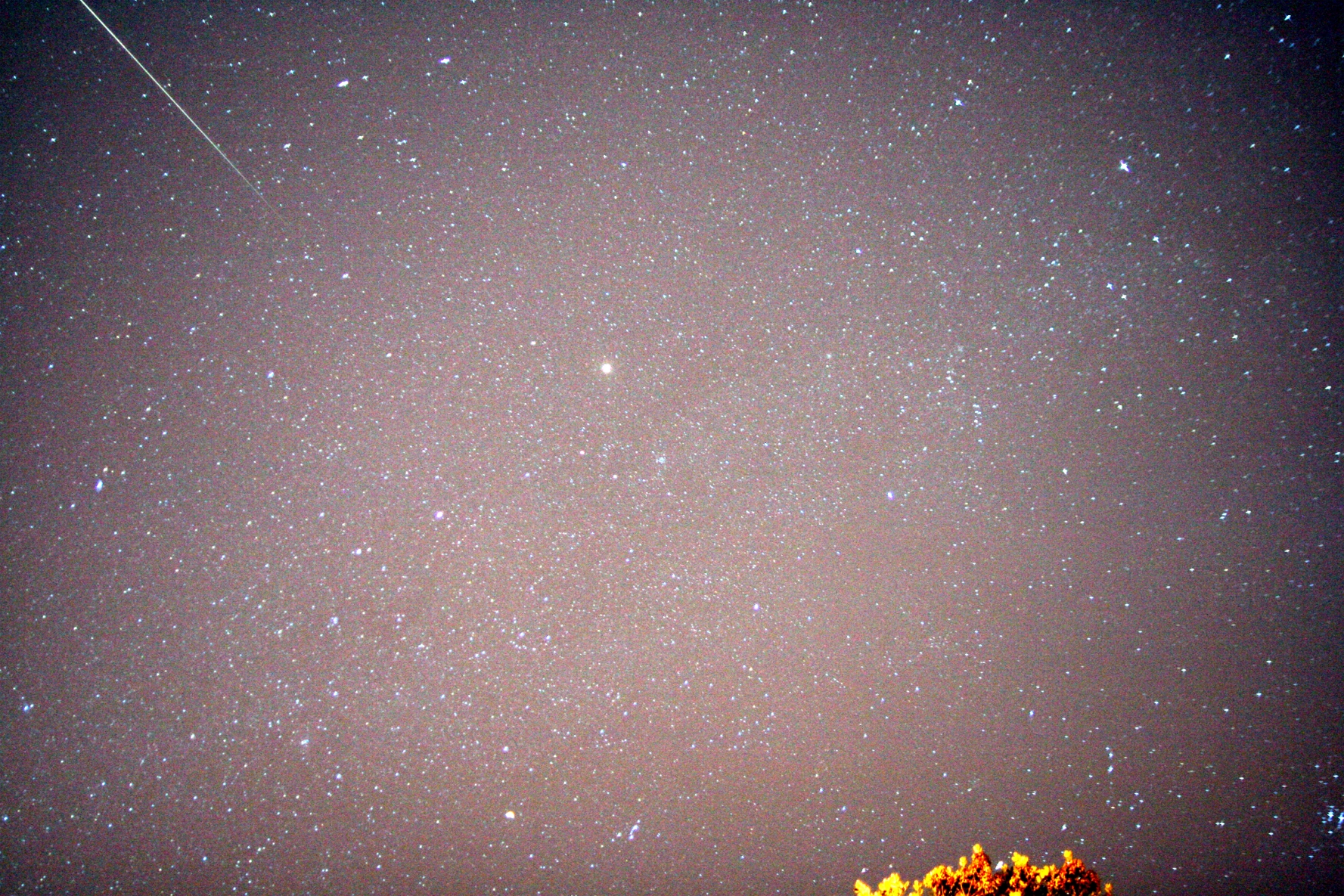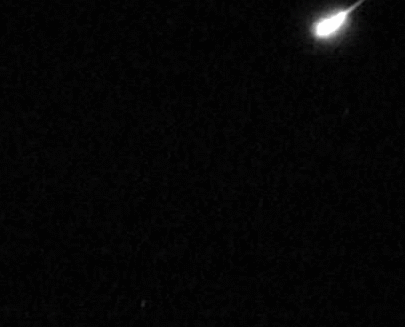Geminid Meteor Shower on:
[Wikipedia]
[Google]
[Amazon]
The Geminids are a prolific meteor shower caused by the object

 The meteors in this shower appear to come from the radiant in the constellation
The meteors in this shower appear to come from the radiant in the constellation 
Viewing details for the 2015 Geminids Meteor Shower
* NASA Meteor Watch 2012: *
Allsky cameras observed 328 bright Geminids - notice how similar they are to the orbit of the asteroid 3200 Phaethon (purple orbit)
*
Composite view of meteors detected in the skies over Marshall Space Flight Center (MSFC)
*
Spectacular Geminid, brighter than the Full Moon
(video 2012-Dec-14 07:28 UT) *
Meteoroid Environment Office: 53 meteor orbits last night of which 18 were Geminids
*
" NASA, 7 December 2001 * Google group search fo
Geminids
sorted by date
Amateur observations of the Geminids
Triangulation of a Geminid Meteor by Crayford Manor House AS
ScienceCasts: Rock Comet Meteor Shower
(Science@NASA YouTube channel : Nov 29, 2012)
Geminids at Constellation Guide
* {{Meteor showers Meteor showers December events
3200 Phaethon
3200 Phaethon (previously sometimes spelled Phaeton), provisional designation , is an active Apollo asteroid with an orbit that brings it closer to the Sun than any other named asteroid (though there are numerous unnamed asteroids with small ...
, which is thought to be a Palladian asteroid with a " rock comet" orbit. This would make the Geminids, together with the Quadrantids
The Quadrantids (QUA) are a meteor shower that peaks in early January and whose radiant (meteor shower), radiant lies in the constellation Boötes. The zenithal hourly rate (ZHR) of this shower can be as high as that of two other reliably rich met ...
, the only major meteor showers not originating from a comet
A comet is an icy, small Solar System body that, when passing close to the Sun, warms and begins to release gases, a process that is called outgassing. This produces a visible atmosphere or coma, and sometimes also a tail. These phenomena ...
. The meteor
A meteoroid () is a small rocky or metallic body in outer space.
Meteoroids are defined as objects significantly smaller than asteroids, ranging in size from grains to objects up to a meter wide. Objects smaller than this are classified as mi ...
s from this shower are slow moving, can be seen in December and usually peak around December 4–16, with the date of highest intensity being the morning of December 14. The shower is thought to be intensifying every year and recent showers have seen 120–160 meteors per hour under optimal conditions, generally around 02:00 to 03:00 local time. Geminids were first observed in 1862, much more recently than other showers such as the Perseids
The Perseids are a prolific meteor shower associated with the comet Swift–Tuttle. The meteors are called the Perseids because the point from which they appear to hail (called the radiant) lies in the constellation Perseus.
Etymology
The name ...
(36 AD) and Leonids
The Leonids ( ) are a prolific meteor shower associated with the comet Tempel–Tuttle, which are also known for their spectacular meteor storms that occur about every 33 years. The Leonids get their name from the location of their radiant ...
(902 AD).
Radiant

 The meteors in this shower appear to come from the radiant in the constellation
The meteors in this shower appear to come from the radiant in the constellation Gemini
Gemini may refer to:
Space
* Gemini (constellation), one of the constellations of the zodiac
** Gemini in Chinese astronomy
* Project Gemini, the second U.S. crewed spaceflight program
* Gemini Observatory, consisting of telescopes in the Norther ...
(hence the shower's name). However, they can appear almost anywhere in the night sky, and often appear yellowish in hue. Well north of the equator, the radiant rises about sunset, reaching a usable elevation from the local evening hours onwards. In the southern hemisphere, the radiant appears only around local midnight or so. Observers in the northern hemisphere will see higher Geminid rates as the radiant is higher in the sky. The meteors travel at medium speed in relation to other showers, at about , making them fairly easy to spot. The Geminids are now considered by many to be the most consistent and active annual shower. Geminids disintegrate while at heights above .

See also
*List of meteor showers
Named meteor showers recur at approximately the same dates each year. They appear to radiate from a certain point in the sky, known as the radiant, and vary in the speed, frequency and brightness of the meteors. As of November 2019, there are 112 ...
References
External links
Viewing details for the 2015 Geminids Meteor Shower
* NASA Meteor Watch 2012: *
Allsky cameras observed 328 bright Geminids - notice how similar they are to the orbit of the asteroid 3200 Phaethon (purple orbit)
*
Composite view of meteors detected in the skies over Marshall Space Flight Center (MSFC)
*
Spectacular Geminid, brighter than the Full Moon
(video 2012-Dec-14 07:28 UT) *
Meteoroid Environment Office: 53 meteor orbits last night of which 18 were Geminids
*
" NASA, 7 December 2001 * Google group search fo
Geminids
sorted by date
Amateur observations of the Geminids
Triangulation of a Geminid Meteor by Crayford Manor House AS
ScienceCasts: Rock Comet Meteor Shower
(Science@NASA YouTube channel : Nov 29, 2012)
Geminids at Constellation Guide
* {{Meteor showers Meteor showers December events